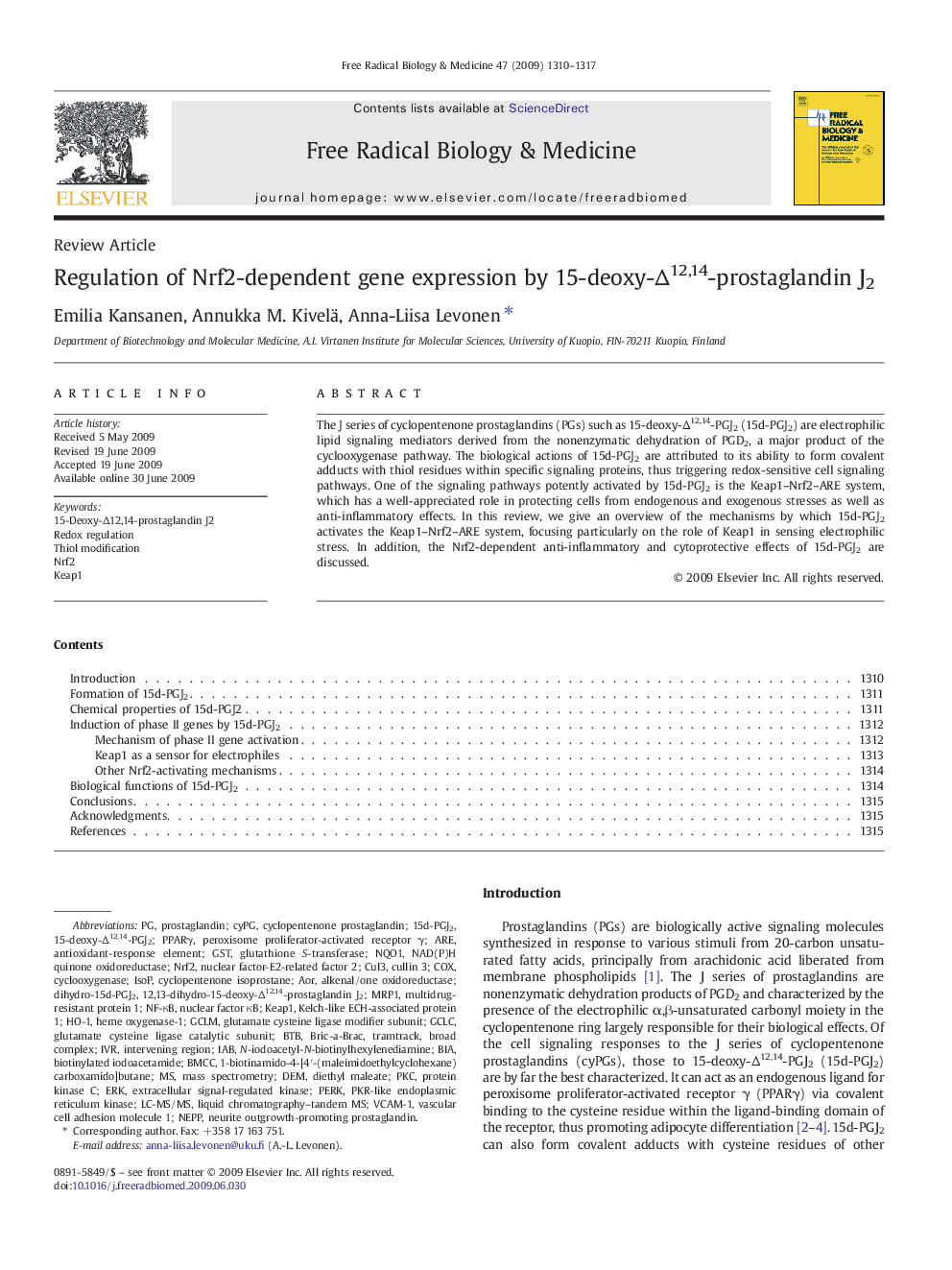| Article ID | Journal | Published Year | Pages | File Type |
|---|---|---|---|---|
| 1909895 | Free Radical Biology and Medicine | 2009 | 8 Pages |
The J series of cyclopentenone prostaglandins (PGs) such as 15-deoxy-Δ12,14-PGJ2 (15d-PGJ2) are electrophilic lipid signaling mediators derived from the nonenzymatic dehydration of PGD2, a major product of the cyclooxygenase pathway. The biological actions of 15d-PGJ2 are attributed to its ability to form covalent adducts with thiol residues within specific signaling proteins, thus triggering redox-sensitive cell signaling pathways. One of the signaling pathways potently activated by 15d-PGJ2 is the Keap1–Nrf2–ARE system, which has a well-appreciated role in protecting cells from endogenous and exogenous stresses as well as anti-inflammatory effects. In this review, we give an overview of the mechanisms by which 15d-PGJ2 activates the Keap1–Nrf2–ARE system, focusing particularly on the role of Keap1 in sensing electrophilic stress. In addition, the Nrf2-dependent anti-inflammatory and cytoprotective effects of 15d-PGJ2 are discussed.
